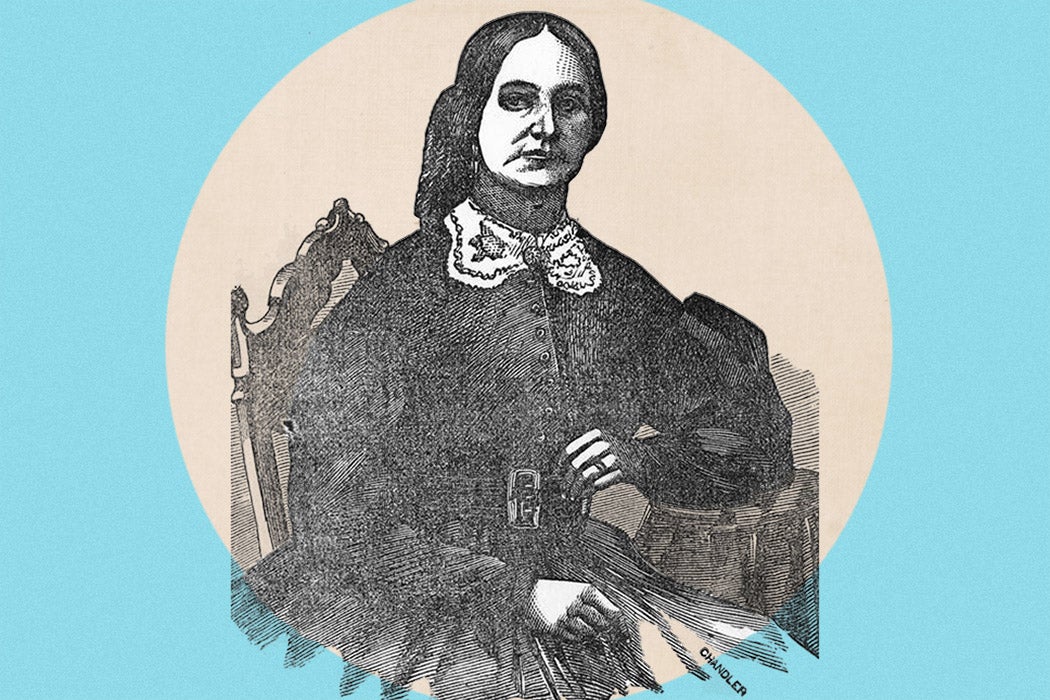The bodies of a man and a woman were found at Cold Spring, a resort northwest of Indianapolis. He’d been shot, with his face ripped away, presumably by the shotgun that lay nearby. She’d also been shot, then burned. A local paper described the scene as “a picture of grisly horror seldom seen except upon the battlefield.” And, in fact, the sight, his body swarming with insects, hers still smoldering, was something that even veterans of the recently ended Civil War found hard to stomach. The couple was later identified as Jacob Young and his wife, Nancy.
As historian Wendy Gamber explains, “Witnesses initially supposed that they had stumbled upon a tragic instance of murder-suicide, a case of a jealous, enraged, or otherwise unhappy husband who killed his wife and then himself.”
But all wasn’t as it appeared. The gun that killed Jacob was in the wrong position for a suicide, and Nancy’s wounds were inflicted by a different kind of gun. This was no murder-suicide. But who would want to harm a couple that had been described as “highly respectable residents?” The answer lay in another clue found at the scene—a shoe print that didn’t match either of the victims’.
The mysterious print was made by a “neat little lady’s gaiter,” according to the Indianapolis Journal. “A woman in such a crime,” the newspaper wondered. “Who could she be?”
She was Nancy Clem, an equally respectable member of society. Clem’s crime perplexed nineteenth-century America. Why would a woman of such standing—“a rural migrant…poorly educated but a respectable, married Methodist of middling economic circumstances,” historian Tamara Plakins Thornton writes—commit such a brutal murder? People across the nation were shocked by “the inexplicable horror of a respectable, even genteel, woman who murdered for money,” Thornton explains.
So how did it come to this? Well, even though it was 1868, the motive seems pretty modern—money.
Nancy Hartman Patton married grocer Franklin Clem in 1859. Clem was her second husband. Her first, William Patton, had died in 1857, leaving her some money. When she married Clem, she had him sign a prenuptial agreement allowing her to keep control of her money. This would prove useful in her future schemes, Gamber writes, as “she regularly turned small profits by loaning out” her inheritance. She, Jacob Young, and a third partner, William J. Abrams, later entered into what Gamber describes as an early Ponzi scheme. Through it, they were able to scam some of the city’s most prominent citizens.
With this newfound wealth, Clem was able to make life a little more comfortable, but she had to be careful. While her partners were living it up, buying horses and buggies and houses, she needed to be more discreet, as her own husband had no idea about her schemes. But things were tense in the crime ring. One speculation is that Clem owed Young money, and he threatened to tell Franklin everything. Another is that she always planned to betray Young, his murder always in the cards. Whatever the cause, the result was the deaths of Young and his wife.
After some investigation, police closed in on Clem, her younger brother, Silas, and Abrams. Abrams had bought one of the guns, which Silas then used to shoot Young. Clem shot Nancy Young with a pistol that was never found. Abrams was convicted and sentenced to life in prison; Silas died by suicide before he could be tried; and Nancy Clem, well, her story stayed complex, Thornton notes, with “two hung juries, two guilty verdicts followed by successful appeals, and a fifth trial canceled for lack of public funds.” There was even an appearance by future president, Benjamin Harrison, who served as prosecutor for the trials.
Weekly Newsletter
What made it difficult to convict Clem was that no one could understand how a woman like her could kill. As Thorton writes, “She was not a prostitute and she did not kill for love, and with those plot lines dismissed, Gilded Age Americans had exhausted the available story lines.” A sixth trial saw her convicted, not for murder, but larceny. She was released after three years, and went right back to her old ways, this time selling “female tonic-cum-abortifacient on the poor side of town,” Thornton explains. When Clem died in 1897, she took the truth of the crimes with her.
She confounded the people of her time, and became infamous for it. As Gamber explains, “Clem was one of the first women to embody a new Gilded Age social type: the genteel murderess—a status made possible, to be sure, by heavy doses of journalistic creativity, but also by shifting constructions of class, gender, and criminal behavior.”







